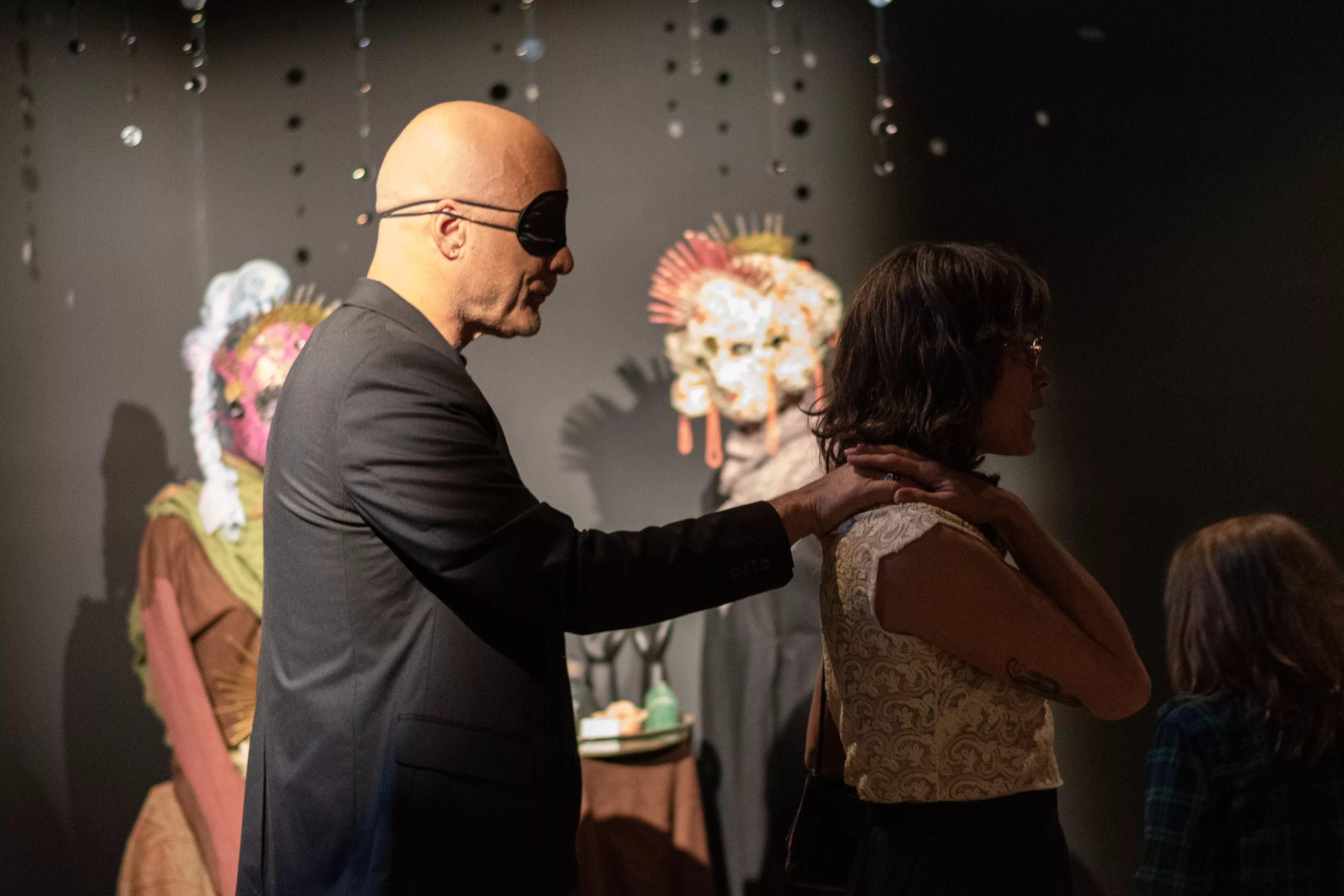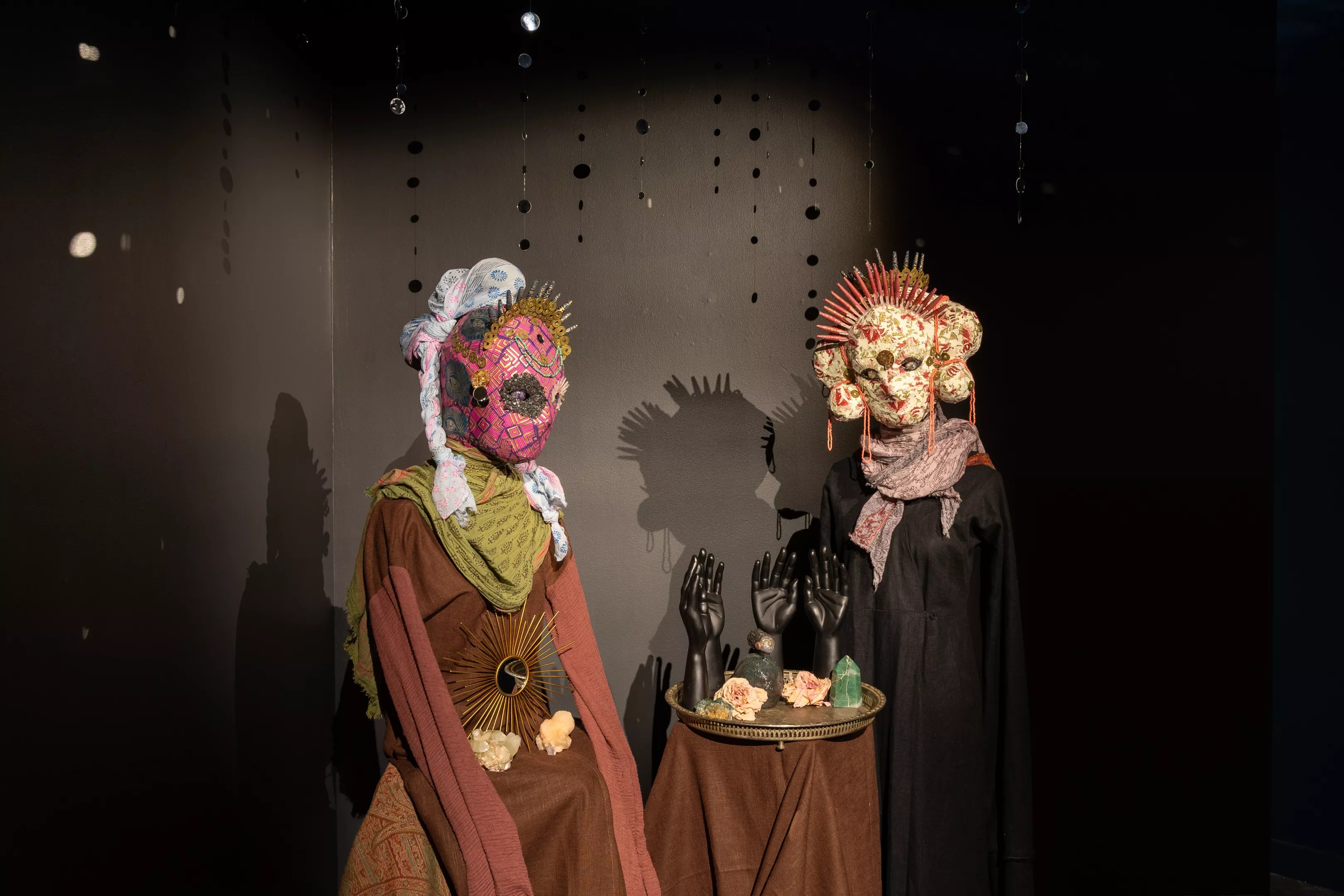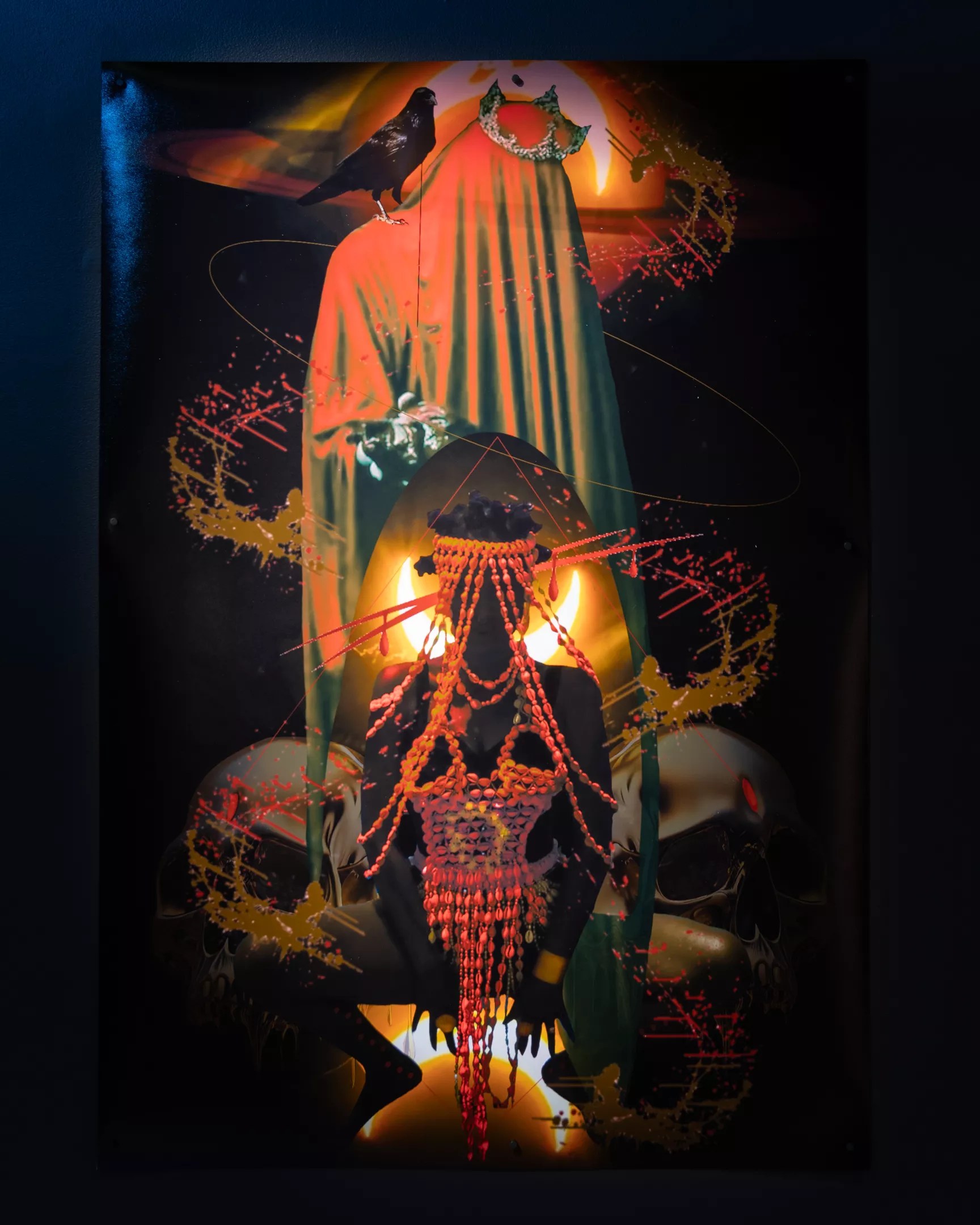
Courtesy of Raymundo Munoz

Audio By Carbonatix
Tucked behind a nearly invisible hallway sign in the Coloradan, Union Hall feels less like an art gallery and more like a secret waiting to be discovered. Located in Denver’s bustling Union Station neighborhood, the entrance is so easy to miss that you might accidentally find yourself boarding a train before realizing you’ve gone too far.
But that hidden quality, as Gallery and Marketing Manager Jess DiÌaz points out, is part of the charm. “It makes stumbling into Union Hall feel like you’ve really found something special,” DiÌaz says.
That spirit of discovery perfectly sets the stage for Oracle, the gallery’s latest exhibition – an experience as much about finding answers as it is about asking questions. On view through August 23, Oracle assembles the work of six female Colorado-based artists, Yazz Atmore, Faatma Be Oné, Linda Bishara, Rebecca Peebles, Sarah Tenney and Harriet Woodman, each exploring spirituality, symbolism and personal transformation through a variety of mediums.
The exhibition’s central concept positions art as a modern-day oracle, a tool for reflection rather than prediction. Drawing inspiration from divination traditions, Oracle offers visitors a chance to engage with art as a mirror for their inner lives, activating meaning through resonance rather than logic.
In conjunction with the visual art exhibition, every Saturday through the gallery’s run, Union Hall offers a “Guided Oracle Experience.” This free offering invites visitors to participate in a blindfolded tour through the exhibit, guided by a gallery representative. With vision removed, participants are led by hand or by linking arms to stand in front of each artwork.
We’re thankful for you. Are you thankful for us?
We feel thankful for our staff and for the privilege of fulfilling our mission to be an unparalleled source of information and insight in Denver. We’re aiming to raise $50,000 by December 31, so we can continue covering what matters most to this community.
Help us continue giving back to Denver.
The idea is to choose one piece not based on how it looks, but on how it feels – ideally, one that stirs something inside you in response to a personal question posed before entering the space. Once a connection is made, the blindfold can be removed, and the viewer is invited to interpret the artwork’s message as a kind of symbolic answer.
I arrived specifically for this component, expecting something experiential as advertised, but “experiential” may be a bit of a marketing stretch. What Oracle achieves instead is far more intimate: an introspective journey designed to quiet the outside world and turn your attention inward.

A blindfolded attendee is led by hand around Oracle at Union Hall.
Courtesy of Raymundo Munoz
Donning the provided black blindfold (and some trust), I linked arms with chief curator Esther Hernandez, who guided me through the space. As we stopped in front of select works, Hernandez prompted me to note what I was feeling.
At the first stop, which I would later learn was the large mixed media piece “Re-Volve” by Faatma Be Oné, I felt a distinct, almost heavy presence in the air. It wasn’t exactly comforting, so I asked to move on. The next stop brought an even deeper emotional weight; I would later find out it was “Lady Death’s Womb Initiation” by Yazz Atmore.

“Re-Vovle” by Faatma Be Oné.
Courtesy of Raymundo Munoz
But at the third piece, something shifted. Though I had no idea what I was looking at, it exuded a quiet, grounded pull that wasn’t exactly peaceful but was compelling enough to make me ask to bookmark it. That piece turned out to be “Space Cowboy,” Atmore’s tribute to Black cowboys and ancestral expansion.
The next stop felt different still – gentle and wave-like, almost like an exhale. I later learned it was “Breathe,” also by Atmore.
“Have you been here before?” Hernandez asked. I hadn’t, but it was one of those rare moments where my instinct seemed to line up with the artist’s intention. Later, she mentioned how closely my impressions matched the energy of the works themselves, a reminder that you don’t always need your eyes to know when something resonates.

“Breathe” by Yazz Atmore.
Courtesy of Raymundo Munoz
From there, I chose to continue through the remaining fourteen accessible works. While visitors are welcome to stop whenever a piece speaks to them, I wanted to experience them all before making any decisions. For most of the remaining stops, I didn’t feel much; a faint echo of sensation here and there, but nothing that landed.
It wasn’t until around the tenth piece that I felt a sudden, tingling pull. That moment came in front of “Visions of Ecstasy in the Palace of the Unknown” by Linda Bishara, though I didn’t know it at the time. The energy was intriguing, perhaps even destabilizing, as if it raised more questions than it answered. I lingered briefly, then moved on.

“Visions of Ecstasy in the Palace of the Unknown” by Linda Bishara.
Courtesy of Raymundo Munoz
After completing the circuit, I asked to return to the two that had stayed with me: “Breathe” and “Space Cowboy.” Standing once again in front of Space Cowboy, I took off the blindfold and read the description for the first time. Although its themes around Black heritage didn’t align perfectly with my own experience, the piece’s encouragement to stay open to expansion and embrace one’s adventurous side felt like an unexpected answer to the question I’d brought in. “Space Cowboy” by Yazz Atmore. Courtesy of Raymundo Munoz
It wasn’t a revelation, exactly – more like something worth chewing on.
After reflecting on “Space Cowboy,” I wandered the gallery again, this time with open eyes. Seeing the full scope of the work revealed a striking diversity in both medium and tone: ceramic totems, digital collages, beaded masks, hand-drawn glyphs and even a ceremonial weighted blanket.
Some pieces exuded calm, others bristled with intensity. Some invited introspection, while others leaned into symbolism and myth. Together, they formed a kind of spiritual toolkit, each work offering a different portal for contemplation.

“Lady Death’s Womb Initiation” by Yazz Atmore.
Courtesy of Raymundo Munoz
Despite the press materials’ emphasis on experiential immersion, I’d argue Oracle doesn’t fully fit that buzzword’s typical definition. There are no projections, soundscapes or technological tricks to envelop the senses or place audiences at the heart of a story.
In fact, the experience asks you to turn most of your senses off. If anything, it’s deliberately un-immersive. It’s not about losing yourself in the art but about stripping everything else away so you can meet it from a quieter, more intentional place.
So no, Oracle may not be super experiential, but the result is still powerful. It doesn’t promise epiphanies or answers, just space. Space to pause, ask questions and sit with whatever answers might surface.
Whether you enter with a blindfold or not, the offer is the same: slow down, pay attention and let the art answer in its own time.
Oracle, on view through Saturday, August 23, Union Hall Art Space, inside the Coloradan, 1750 Wewatta Street, Suite 144; learn more at unionhalldenver.org.